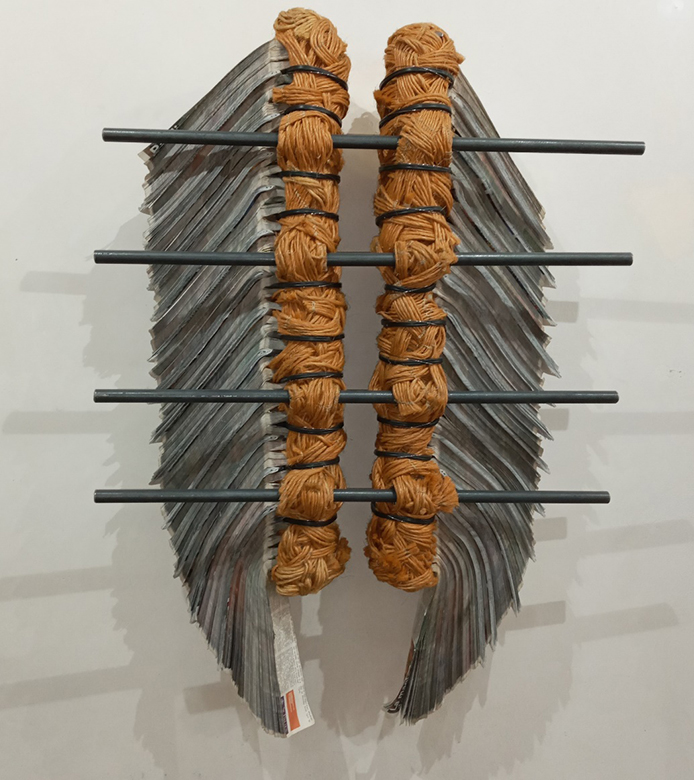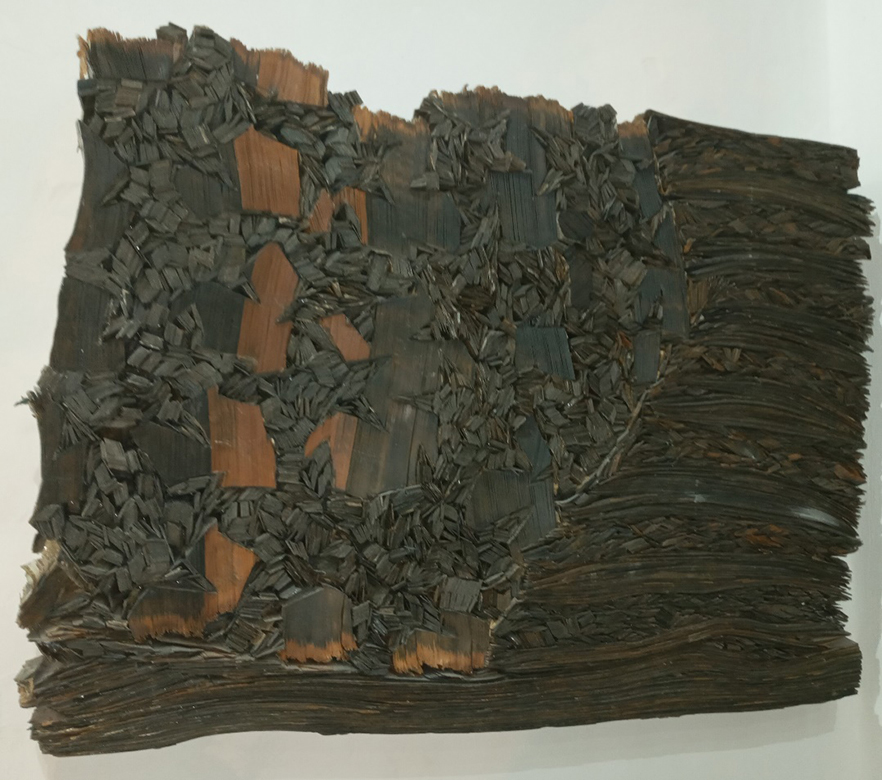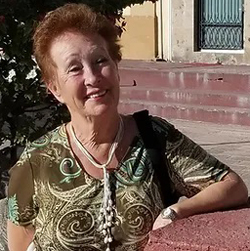
June 25, 2023
by Natalie Taylor
Kate Hunt was born in Kalispell, Montana, and grew up in Chester. One of the nicknames for the state is Big Sky Country, which Kate says perfectly describes the vastness, the wheat-colored landscape, the flat land that stretches for miles and miles, providing a 360 degree horizon. This panorama has not only influenced her art, it is an integral part of it.
Kate never considered anything but art as a career. Even as a little girl she was always "making stuff," trying out different materials to create things. She was fortunate to have parents who approved of her experiments, even if sometimes they did not turn out just right. Kate remembers when she was in elementary school, she took some glue and poured it right on the carpet at home, wondering what the result would be. It was a big mess, of course, but her parents were not upset with her "creation," they accepted it as part of their daughter's creative spirit.
Initially, Kate went to the Kansas City Art Institute in Kansas City, then on to the Cranbrook Academy of Art in Detroit, to continue her studies. She was always very "object oriented" and began working with ceramics. But when she attended an International Ceramics workshop in Helena, Montana, she discovered weaving with newspaper. Kate became fascinated by the possibilities with paper, and it has since become her preferred medium for creating her woven sculptures.

This is an excellent example of Kate's combination of different materials —newspaper, twine, and metal bars. The work, at first glance, has an immediate effect on the viewer, who then is compelled to come closer and examine the details.
An interesting news item in 2014 had an impact on Kate and her work. That year, the nearly one-hundred year old, frozen body of a sailor was uncovered, and the photos were all over the newspapers. The images of the man, encased in ice, were disgusting and compelling. John Torrington had been in an Arctic expedition in 1845, when his ship was stuck in the ice, and all aboard perished in the cold. The photos of his frozen body—ghastly in its stone-like preservation, with his wispy skin and clothing, affected Kate. Without a clear explanation, she saw a certain reflection of the frozen man in her own works with paper. She began to call her paper creations, "Torringtons," and has kept that name till this day.

Here is an excellent example of one of Kate's Torringtons. Since, she does not object to the viewer giving their own titles to her works—she herself prefers to leave it up to their imagination, I like to think of this as a charred angel. And when I think of it in those terms, there is also a suggestion of the century-old remains of the eponymous sailor.
Kate's works are incredibly intricate, imaginative, and take a variety of skills to achieve. The works consist of many, many layers of cut newspaper, which have been sliced precisely with a guillotine cutter. She then stacks these strips one over another, binds them together with glue, and or wire, often adding bailing twine, boat building epoxy, and encaustic until the right effect is achieved. At first she only made her structures of paper, but later began experimenting with applying wax, then burning part, or all of the works. Many of these paper sculptures look like bird feathers, and only up close do you become aware that they are not.
In the photos included, for example, two of the sculptures have that appearance—wings of giant birds. But they are all newspaper. After trying different sources of paper like books, and bibles, she found that these did not work as she intended. Neither does she use foreign publications, other than San Miguel's bilingual newspaper, Atencion, which includes both English and Spanish words.
In 1977 she came across art works using the American flag, and the idea resonated with her. Like other artists, she uses the flag symbolically and with intention. The flag of the United States is unique. Unlike other countries' flags, which are usually a mix of one or more colored panels, just a few strokes implying stars and stripes immediately bring to mind the American flag.

Because of its uniqueness, Kate can play around with textures, and colors, and still make an unmistakable flag of the US. In her latest exposition at Casa de Europa, Kate had on display many interpretations of the flag. One of them, which she calls the Calcium Flag, was the first flag she created in San Miguel, when she moved here in 2016. She had an idea of the color she wanted, and after experimenting with many different substances, found that she could achieve the right hue by using calcium.

The result is a monochromatic newspaper sculpture in grayish tones, with white. Without reds or blues, it is still an unequivocal rendition of the US flag. Kate sees the flag as an object, a wall piece. But she also has feelings about its meaning, which she expresses in these words: "It seems the flag has been sullied of late. Some bad actors are using it to wrap themselves in it as a diversion to their cause. Well, I won't let them take it from me. It's my flag and my country, which I deeply love."
Here is another enigmatic rendition of the US flag; without stars, with just a hint of stripes, it is still recognizable.

Kate intends her art to be timeless, not trendy. She says that her art is "a conversation between the artist and the art," with the viewer stepping in as the third participant, bringing their own imagination. You can contact Kate at: kate@katehunt.com
www.katehunt.com
**************

Natalie Taylor, born to Ukrainian parents, grew up in Argentina, where her family fled after WWII. They eventually moved to the U.S., and she spent most of her adult life there. She has a journalism degree, and an MFA in creative writing from Vermont College, Montpelier, VT. Her short stories, and poetry have been published in numerous literary magazines, and she has received several literary awards. She and her husband currently reside in San Miguel, where she has a weekly column in Atención, for which she also does translations. She has two books about San Miguel, available on Amazon or at the Tesoros Book Store: "Of All the Towns in All the World," and "SMA Self-Guided Historical Walking Tour." Her memoir, "The Tango House," will be coming out soon.
www.natalietaylor.org
**************
*****
Please contribute to Lokkal,
SMA's online collective:
 ***
***
Discover Lokkal:
Watch the two-minute video below.
Then, just below that, scroll down SMA's Community Wall.
Mission

Visit SMA's Social Network
